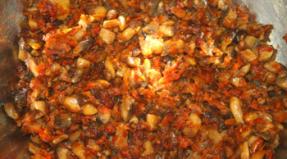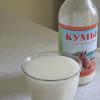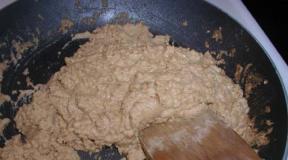All about the dangers of beer and the consequences of frequent use. How to stop drinking beer
Intoxicated drink in modern society has become an integral part of gatherings of men, meetings of girls and teenage parties. A drunk mug of beer does not knock you off your feet like strong alcohol, so even nursing mothers sometimes allow themselves to relax, claiming that it is good for lactation. However, this is far from a non-alcoholic product. In some varieties, the alcohol content is up to 14%. The harm of beer to the health of men, women and children has already been proven by experts, and beer alcoholism is no less terrible than any other.
What is beer
This is a frothy refreshing drink with a pleasant bitter taste and hop aroma. The raw material for its production is hops, barley, yeast, water. The taste of beer directly depends on the quality of these products. This is a low-alcohol drink containing from 2 to 6% alcohol. Beer is produced in several types:
- pasteurized;
- unfiltered;
- filtered;
- with the addition of stabilizers, preservatives.
Composition
Modern beers do not always contain only classic natural products. The main components of the drink offered to the consumer in stores are water (91-93%), ethyl alcohol (3-7%), carbohydrates (1.5-4.5%), nitrogen-containing substances (0.2-0.65 %). Other substances (minor) have a much lower content. Glucose, fructose, sucrose (simple sugars) account for 10-15% of the total amount of carbohydrates. The mechanisms of the toxic action of all components are interconnected, while ethanol enhances the toxic effect of minor compounds.
Cooking technology
Most modern factories in the production of beer follow certain steps, the observance of which becomes the key to the quality of the drink:
- Malt preparation. At this stage, the cereal grain is dried, germinated, cleaned.
- Mashing the wort. Malt is crushed, mixed with water.
- Congestion filtering. It is passed through a filtration system, as a result of which it is separated into grains and liquid wort.
- Adding hops. Cones are placed in the wort. Some manufacturers at this stage add natural or artificial ingredients that give the drink shades of aroma and taste.
- Boiling. The must is boiled for several hours.
- Lightening. The liquid is pumped into a special device, where it is cleaned from solid residues under the action of centrifugal force.
- Cooling. In the fermentation tank, the drink is enriched with oxygen, which is necessary for the vital activity of the yeast.
- Fermentation. At this stage, brewer's yeast is added. After a few weeks, a low-alcohol, cloudy drink is already obtained.
- Excerpt. Occurs in closed tanks under high pressure of carbon dioxide.
- Filtration. This step is not always used. The task of the process is to remove the remaining yeast.
- Pasteurization. To increase the shelf life of the drink, it warms up to a temperature of 65-80 ° C. Beer connoisseurs believe that this procedure negatively affects the taste.
Is beer harmful?
The composition of beer and its effect on the body are directly related. A drink made exclusively from natural products and made according to all the rules of manufacture does not cause much harm. However, excessive drinking of beer, like any other extreme, leads to negative results. The consequences of beer alcoholism are no less severe than from vodka and drugs. During fermentation, compounds such as aldehydes, fusel oils, and methanol are released and stored. These are poisons for the human body.
Unfiltered
Is it harmful to drink beer that has not passed the filtration stage - this question interests some people. The so-called "live" drink without heat treatment should not contain preservatives, surrogates or stabilizers. The disadvantage of such a product is a limited shelf life (up to 7 days), so many enterprises either do not risk releasing this product at all, or add substances to it that extend the shelf life. The combination of malt and hops gives the liquid a cloudiness that reduces the presentation. Filtration makes the product transparent, but removes almost all the beneficial substances.
non-alcoholic
The same ingredients are used to make a soft drink, but the percentage of alcohol content is reduced by stopping fermentation and using low-temperature technologies. The finished product is subjected to an evaporation procedure that retains a bitter aftertaste. After the manufacture of such products, a small percentage of alcohol is still present in it. However, this is not at all the harm of non-alcoholic beer:
- Cobalt. The element is actively used to stabilize the foam. Destroys the cardiovascular system.
- Malt and hops. These substances destroy the endocrine system.

How beer affects the body
Not everyone wants to know about the dangers of beer, because it is considered almost a national drink. However, excessive consumption of beer liquid causes changes in the work of all important organs of the human body. The heart, blood vessels, and liver suffer the most. Beer affects the male body, because it contains phytoestrogens - female hormones, so beer lovers get fat on the sides and hips, their potency decreases, and breast enlargement occurs. For women, beer addiction also does not pass without a trace - their voice coarsens, antennae appear.
On the heart
The abuse of hops leads to a violation of the autonomic system, accompanied by a high heart rate up to 100 beats / minute, a decrease in the rate of myocardial contraction. The result of this condition is an increased cardiac need for nutrients. The most common pathology among beer alcoholics is toxic myocardial dystrophy, characterized by murmurs and pains in the heart, shortness of breath, swelling of the extremities, and a violation of the contractile function of the organ.
On hormones
In the course of numerous studies, the negative impact of alcohol-containing drinks on the human hormonal background has been established. The intake of fermentation products in large quantities leads to the fact that the male hormone testosterone loses its strength, and this provokes the degradation of muscle mass. When alcohol enters the blood, an active production of cortisol (stress hormone) occurs, which causes anxiety, anxiety, fear, and leads to prolonged depression.
On the brain
When beer alcoholism develops, brain activity first decreases, which often leads to dementia over time. The brain system is quickly saturated with blood, so the ethyl alcohol in it reaches its maximum concentration. The short-term effects of ethanol on the brain result in memory lapses and hangovers. The systemic use of beer fluid changes the structure and tissues of the organ - a person degrades.
On the liver
It is difficult to call beer a useful product for the liver. Regular consumption of intoxicating drink brings irreparable harm to the body. Drinking a foamy liquid is dangerous not only because of the content of ethyl alcohol - impurities in the form of preservatives and dyes also provoke the development of various liver diseases. If alcohol consumption is accompanied by a sedentary lifestyle and eating heavy meals, then over time a person is guaranteed to receive some kind of consequence in the form of:
- liver failure;
- hepatic coma;
- cirrhosis;
- alcoholic hepatitis.
On the kidneys
The task of the paired organ is to cleanse the blood of toxic substances and metabolic products. The kidneys are a natural filter, and the more a person drinks beer liquid, the greater the load they take on. Together with toxins, vitamins and microelements necessary for normal functioning leave the body, which leads to a deficiency of nutrients. Regardless of the strength of beer, with frequent consumption of an intoxicating drink, a person runs the risk of earning such ailments as:
- heart attack or dystrophy of the kidneys;
- urolithiasis disease;
- nephritis.

On the stomach
The digestive organs suffer from beer alcoholism no less. With the daily use of ethanol, the glands that produce gastric juice atrophy. Due to inadequate digestion, a person gets alcoholic gastritis. This is a chronic disease, which is accompanied by constant heaviness in the stomach, abdominal pain, bitterness in the mouth, general weakness, depressed mood.
What does daily drinking lead to?
The high carbon dioxide saturation of the intoxicated liquid negatively affects the blood vessels, so its regular use leads to varicose veins. The relationship between the amount of foamy drink drunk and an increase in blood pressure has also been proven. The harm to the pancreas is also great, because due to the constant intake of alcohol, the organ becomes inflamed and increases in size. In the absence of treatment and further intake of ethanol, pancreatitis, pancreatic necrosis, and cancer develop.
Harm of beer for men
Especially great harm from beer for men. Since the drink contains a female sex hormone, this leads to hormonal failure. A man becomes passive and indifferent to the opposite sex. Prolonged use of foamy liquid leads to a blockage of the reproductive function, in which male germ cells become incapable of fertilization. Due to addiction to alcohol, a man not only loses his sexual desire, but also becomes infertile.
Harm of beer for women
Infertility also threatens the female body. Scientists have proven that excessive consumption of beer reduces the production of sex hormones, so they are not enough for conception. An intoxicating drink does great harm to beauty and youth, because it is well known that it causes a feeling of hunger and fluid retention, which leads to edema, obesity, and cellulite. Beer lovers lose their femininity over time, because hormonal disorders provoke the appearance of male characteristics: the stomach grows, hair appears on the chest and face.
Harm of beer for teenagers
It is useful for young people to know how harmful beer is, because in recent years advertising of an intoxicating drink is found everywhere. Beer alcoholism among teenagers flourishes at the age of 14-15. A young and immature organism has a special sensitivity to any addictions, so every year another batch of young alcoholics replenishes neuropsychiatric hospitals. The danger of beer is not only ruined health. Alcohol leads to unplanned pregnancies and aggression, which contributes to the infestation of orphanages by abandoned children and juvenile prisons.

beer alcoholism
Unfortunately, the media do not spread much about the dangers of beer, because advertising of alcoholic products brings a huge income. In the social environment, the intoxicating drink has become so popular that today not a single event can do without its presence. Friends call not to talk, but to skip a glass of beer, and the refusal to drink is accompanied by misunderstanding and ridicule.
Active promotion of beer in feature films also leads to mass alcoholism. If a goodie relaxes with an intoxicating drink, then this is not considered a bad habit. This presentation of information has an impact on the formation of stereotypes of an entire generation. The problem of alcoholism, as a social phenomenon, affects almost aspects of a person's life: health, family, work.
Video
In ancient times, it was believed that drinking beer improves appetite, accelerates growth and physical development, and improves health. Medieval European physicians even attributed it to malnutrition, kidney and bladder problems, asthma and insomnia, and skin problems.
Today's beer in composition, taste, color, and effect on the body differs from the product that people once brewed and drank.
What are the benefits of drinking beer?
Beer is high in potassium and low in sodium. In moderation, beer can be consumed by those who suffer from hypertension and are forced to limit themselves to salt.
Beer is rich in vitamins B1 and B2. Drinking 1 liter of beer will provide 40-60% of the daily requirement for thiamine (B1) and riboflavin (B2).
Beer is rich in ascorbic acid - it is added to prevent oxidation processes.
Citric acid, which is part of beer, stimulates the formation of urine and thus prevents the formation of kidney stones, so drinking beer is useful in this case.
Phenolic compounds of beer are the most valuable components of this drink. They prevent the formation of blood clots, normalize lipid metabolism and protect against heart attacks and strokes, but if you drink beer in moderation.
The carbon dioxide contained in beer stimulates gastric secretion and blood flow in the muscles, liver, lungs and kidneys. In addition, he does not allow you to drink beer in one gulp and this keeps you from getting drunk quickly.
The extractive substances of hops have a sedative effect and have bactericidal properties when drinking beer.
What's wrong with drinking beer?

Excessive drinking of beer puts a strain on the venous bed, on the heart. The heart "sags", becomes flabby, hardly copes with its functions. And since everything in the body is interconnected, other organs begin to suffer.
After drinking a couple of glasses of beer in the body, a substance is released that suppresses the production of the main male hormone - testosterone. As a result, female hormones are more actively produced. Plus, plant analogues of female hormones - phytoestrogens - enter the body from hops. If this lasts for many years, the man's pelvis becomes wider, the mammary glands increase, i.e. the physique of a man acquires female features of a figure.
Drinking beer stimulates the appetite and makes you eat more than you need.
What dose of beer is considered safe?
1 liter per day of normal strength (3-5%) gives about 40 g of ethanol alcohol to the blood. This is the limit of alcohol that should be consumed per day. But it is better to limit yourself to drinking 0.5 liters of beer per day.
 Many people believe that beer is a fairly harmless liquor. However, scientists who study the problem of alcoholism say that it is impossible to separate alcoholic beverages according to their degree of harmfulness. In fact, none of them are harmless.
Many people believe that beer is a fairly harmless liquor. However, scientists who study the problem of alcoholism say that it is impossible to separate alcoholic beverages according to their degree of harmfulness. In fact, none of them are harmless.
Producers of beer impose advertising on society, which is aimed at increasing its sales. She claims that beer is a low-alcohol drink and even healthy. But it's not. Some beers have a high alcohol content. It reaches 14%, almost like in wines. In the Soviet Union, the strength of beer was only 1.5 - 2.8%.
Drinking people do not consider "beer alcoholism" such a serious disease as "vodka" or "wine". But in vain. After all, its consequences for the body are much more destructive.
Symptoms and signs of beer alcoholism
The development of beer alcoholism is slower than its other types. Dependence on beer has its own characteristics and this allows us to consider it a separate type of alcohol addiction.
And although gambrinism (from the Latin gambrinismus- beer alcoholism) among physicians is considered not entirely correct, and such a diagnosis has not yet been made to anyone, but nevertheless this term is quite often used in the media. Narcologists dislike the expression "beer alcoholism" because, by analogy, wine, vodka and cognac addictions should be distinguished. And yet, some scientists argue that gambrinism is a special form of alcoholism.
The basic principle of the development of dependence on beer is “long and almost imperceptible”. A person who consumes no more than 2 bottles of beer a day does not feel any special changes in his condition. Just pleasant relaxation. However, behind his short periods lies real alcoholism. It reinforces in the brain an irresistible desire to experience this state on a daily basis and leads to frequent drinking of beer.
Signs characteristic of beer alcoholism are:
- Drinking beer in the morning to get rid of a hangover.
- Insomnia at night and.
- Regular (every day) consumption of beer at least 1 liter.
- Inability to relax without stimulants.
- Aggression during periods of forced sobriety, irritability during the disruption of planned drinks.
- An increase in the abdomen, which is often called beer.
 If at first a person does not drink beer every day, then later he wants to use a foamy drink more and more often. It ends with the fact that the drinker is unable to refuse his daily use. The dose of the drunk potion is increased many times over. In very severe cases, an alcoholic can consume up to 15 liters of drink per day.
If at first a person does not drink beer every day, then later he wants to use a foamy drink more and more often. It ends with the fact that the drinker is unable to refuse his daily use. The dose of the drunk potion is increased many times over. In very severe cases, an alcoholic can consume up to 15 liters of drink per day.
With beer alcoholism, a hangover is similar to that of ordinary alcoholism, but it is removed much harder. In addition to the fact that the patient has a headache, he is also tormented by severe diarrhea.
Female beer alcoholism
Many of the symptoms of beer alcoholism in women are the same as those in men. But besides them, there are such signs as:
- Unwillingness to take care of the family.
- Capriciousness
- Self-digging.
- Tearfulness.
Beer alcoholism in women develops faster and is much more difficult to treat. Therefore, at the slightest manifestation of it, it is urgent to contact a narcologist and follow all his instructions.
Beer addiction in teenagers
 Teenage beer alcoholism is just as common as adults. It is aggravated by the fact that the child, due to his own naivety, cannot realize the perniciousness of the regular intake of alcoholic beverages. A growing body gets used to beer many times faster than an adult, so children need to be closely monitored.
Teenage beer alcoholism is just as common as adults. It is aggravated by the fact that the child, due to his own naivety, cannot realize the perniciousness of the regular intake of alcoholic beverages. A growing body gets used to beer many times faster than an adult, so children need to be closely monitored.
Parents should be alert for symptoms such as:
- Closure.
- Decreased performance.
- The appearance of irritability.
- Deception.
- Late festivities.
- Escape from family problems.
Important: 99% of drug addicts started their drug "career" with cigarettes and beer.
If these signs are found, it is urgent to take the child to a drug treatment clinic.
Dangerous consequences of beer alcoholism
If you regularly use a "soft" drink, then the body will definitely fail. After all, beer contains alcohol toxins (if you drink a lot of beer, then toxins also come in dangerous amounts) and harmful compounds that significantly impair metabolic processes and functions of all vital systems and organs:
A heart
 First of all, the heart suffers. The German professor Boliger called the heart of beer lovers "bull", as its walls thicken significantly, the cavities expand, and cells in the heart muscle die. The culprit of this pathology is cobalt, which is used as a foam stabilizer. The content in the heart of this element in people who abuse beer is 10 times higher than the norm. The same element causes inflammation in the stomach and esophagus. Violates the work of the heart and carbon dioxide, which is contained in beer in large quantities. Beer, getting into the body, overflows the vessels of the circulatory system. The result is an expansion of the boundaries of the heart and. In people who abuse the foamy drink, there is a syndrome of "kapron stocking". At the same time, the heart sags, increases in size, becomes flabby and copes very poorly with the function of the “pump” (pumps blood).
First of all, the heart suffers. The German professor Boliger called the heart of beer lovers "bull", as its walls thicken significantly, the cavities expand, and cells in the heart muscle die. The culprit of this pathology is cobalt, which is used as a foam stabilizer. The content in the heart of this element in people who abuse beer is 10 times higher than the norm. The same element causes inflammation in the stomach and esophagus. Violates the work of the heart and carbon dioxide, which is contained in beer in large quantities. Beer, getting into the body, overflows the vessels of the circulatory system. The result is an expansion of the boundaries of the heart and. In people who abuse the foamy drink, there is a syndrome of "kapron stocking". At the same time, the heart sags, increases in size, becomes flabby and copes very poorly with the function of the “pump” (pumps blood).
Endocrine system
Toxic substances contained in beer disrupt the endocrine system. With its regular use, a substance is released that inhibits).
- In men who drink beer, fat reserves begin to be deposited according to the female type: on the sides, hips, the pelvis increases. In addition, beer significantly weakens interest in the fair sex. For 15 years of drinking a drink made from hops.
- If a woman drinks beer, then her voice becomes rough, as well as cancer. Breastfeeding mothers raise children with a high predisposition to epilepsy.
Liver
Doctors have found that people who systematically consume beer are often diagnosed with an enlarged liver, which further leads to the development of cirrhosis.
Brain
Beer kills brain cells. They enter the bloodstream, are filtered by the kidneys and are removed from the body along with urine.
Other organs and systems
 A person drinking beer develops diseases such as gastritis, pancreatitis, hepatitis, hypertension, neuropathy, auditory and visual analyzers are affected. With beer alcoholism, hyponatremia and lactic acidosis develop. Alcoholics enter medical institutions in a very neglected state, with severe dementia.
A person drinking beer develops diseases such as gastritis, pancreatitis, hepatitis, hypertension, neuropathy, auditory and visual analyzers are affected. With beer alcoholism, hyponatremia and lactic acidosis develop. Alcoholics enter medical institutions in a very neglected state, with severe dementia.
Stages of development of beer alcoholism
Dependence on beer is divided into stages:
1. A mild form of addiction. It is not able to notice neither the immediate environment of the drinker, nor he himself. A person randomly takes beer first on holidays, then with colleagues, friends (not every day) several times a week. This ends with the daily use of 1 - 2 bottles of foamy drink.
2. In the next stage, a person becomes irritable, aggressive, and there are problems with relaxation. Beer alcoholics drink daily, although they don't drink themselves out of control. The dose of the drink you drink can be very large (up to 15 liters of beer per day). At this stage, the urgent help of a narcologist is needed.
Causes of addiction
 When preparing a foamy drink, hops are used. This plant is the closest relative of hemp (they can be crossed and get hybrids). Everyone knows that cannabis is a drug, just like hashish and marijuana. Naturally, hops also contain narcotic substances, only in smaller quantities, and ethyl alcohol can be classified as a potent drug. Therefore, beer alcoholism is formed quickly and almost imperceptibly. Narcologists say that an unhealthy addiction appears even to non-alcoholic beer, worse, alcoholics experience symptoms of drug withdrawal.
When preparing a foamy drink, hops are used. This plant is the closest relative of hemp (they can be crossed and get hybrids). Everyone knows that cannabis is a drug, just like hashish and marijuana. Naturally, hops also contain narcotic substances, only in smaller quantities, and ethyl alcohol can be classified as a potent drug. Therefore, beer alcoholism is formed quickly and almost imperceptibly. Narcologists say that an unhealthy addiction appears even to non-alcoholic beer, worse, alcoholics experience symptoms of drug withdrawal.
Treatment of beer alcoholism
Many people are interested in the question: "How to get rid of beer alcoholism?"
 First, you need to remember that if you refuse to use a harmful drink, it will never be possible to resume drinking! Since it is disturbed in the brain, the normal reaction to alcohol-containing drinks will also never be restored. The slightest use of them will surely lead to a breakdown. Even refraining from drinking for decades does not guarantee that a person will be able to drink culturally. As they say, there are no former alcoholics.
First, you need to remember that if you refuse to use a harmful drink, it will never be possible to resume drinking! Since it is disturbed in the brain, the normal reaction to alcohol-containing drinks will also never be restored. The slightest use of them will surely lead to a breakdown. Even refraining from drinking for decades does not guarantee that a person will be able to drink culturally. As they say, there are no former alcoholics.
The complexity of beer alcoholism is that addiction to beer is much stronger than to vodka. And if a person stops drinking, then you have to go to the end.
Alcoholism requires a long and persistent treatment. It is necessary that the patient himself admit his addiction to beer and wish to be cured, since compulsory treatment of beer alcoholism is completely useless.
There are several methods of curing the disease:
- Hypnosis.
- laser coding.
- Medications.
- With the help of folk remedies.
First of all, the alcoholic must be taken out of binge and the consequences of alcohol intoxication must be eliminated, and then the unhealthy addiction to it must be suppressed.
Prevention of beer alcoholism
1. Formation among the population of the opinion that alcohol can cause great harm to health. It is necessary to conduct explanatory conversations with adolescents, both parents and teachers.
2. Providing people with normal social conditions. For example, children raised in dysfunctional families are more likely to develop beer addiction.
3. The state plays a huge role in the prevention of alcoholism. The adoption of the necessary laws, of course, will be able to regulate the situation with alcoholic beverages in the country. For example, a ban on advertising of this drink helped to significantly reduce the consumption of beer.
It is important: The most effective method of combating alcoholism is its prevention. It is much easier to prevent a disease than to treat it.
 You must be aware that beer alcoholism is a great danger to people. After all, beer is a drug. And it is very easy to fall into his trap, especially for teenagers, when everyone around is drinking a foamy drink like water. And for many young people, this behavior is a lifestyle. Starting to drink beer is easy, because it is sold on every corner. But getting rid of the consequences of its use is very difficult. But if problems have already arisen, you need to stop immediately, if not by yourself, then with the help of a doctor.
You must be aware that beer alcoholism is a great danger to people. After all, beer is a drug. And it is very easy to fall into his trap, especially for teenagers, when everyone around is drinking a foamy drink like water. And for many young people, this behavior is a lifestyle. Starting to drink beer is easy, because it is sold on every corner. But getting rid of the consequences of its use is very difficult. But if problems have already arisen, you need to stop immediately, if not by yourself, then with the help of a doctor.
Assessing the harm of beer, doctors assure that a strong addiction develops from this drink, as a result of which a person is struck by the so-called "beer". It is very difficult to cure this type of alcoholism, since a person who drinks beer does not consider himself, and the symptoms do not have a pronounced manifestation.
At the same time, according to psychologists, personal indicators are rapidly leveling out, a person with this type of alcoholism is prone to mood swings, prolonged depression, he renounces his own opinion, becomes easily controlled and driven. The reason for everything is the harmful salts of heavy metals that accumulate in the body of the “victim” who consumes beer.
It should be remembered that 1 liter of beer in terms of intoxicating properties is equal to 50 grams of vodka.
With excessive consumption of beer, not only alcohol dependence can develop, but also serious diseases of the liver, heart, brain, as well as dysfunction of many systems of the human body.
Diseases
When drinking beer, the "bull heart" syndrome develops. As a result of the disease, the cavities of the heart expand greatly, and the walls themselves thicken, which leads to a malfunction of the heart muscle and its weakening. The heart literally swells and becomes decrepit. This won't work for long. All this is due to the content of cobalt in beer, which is strong, making it difficult to pump blood.
To be fair, it should be noted that beer in small doses does not harm the body, drinking a mug of beer every couple of weeks after a bath activates metabolic processes and improves the functioning of the stomach. The main thing is to know the measure!
Drinking beer negatively affects health and hormonal levels, the human endocrine system due to the excessively high content of heavy metals in it. Simply put, beer alcoholism leads to infertility. In addition, drinking beer completely changes the hormonal system of the male and female body. So, y ceases to be produced, and they become effeminate. On the contrary, it begins to be produced in large quantities, which leads to a change in voice and active growth of hairline, including on the face.
Drinking beer is also harmful because it increases the risk of developing cancer hundreds of times. First of all, this affects the liver, which stops processing blood properly. As a result, this leads to its increase, which causes severe forms and cirrhosis of the liver.
With excessive and constant consumption of beer, brain cells die. This threatens with a stroke, brain cancer and multiple sclerosis, there is a complete degradation of a person.
Some men mistakenly believe that a couple of beers every night will not harm their health, only improve the quality of sleep. In fact, this is an amateurish reasoning, since excessive consumption of this intoxicating drink negatively affects the work of all internal organs and body systems. That is why it is so important to know about the dangers of beer in order to protect your health in a timely manner.
General information about the problem
For a person, beer can become the most favorite drink, and consumes it 7 times a week, and in unlimited daily portions. The consequences can be irreversible, since this intoxicating drink primarily affects the composition of the blood and disrupts the hormonal balance. In the male body, female hormones begin to dominate, which is why men should not drink beer. As for the blood, the harm of beer is obvious: there is a risk of high cholesterol and the formation of atherosclerotic plaques.
For many men, the benefits of beer for the body are enormous, while there is no harm to health at all. If weight gain and the acquisition of femininity are not a weighty argument against this alcoholic drink, this topic should be given special attention, telling in detail why you should not drink beer.
Beer and female hormones
Despite its natural composition - hops and malt, beer is harmful for the body, in particular for the once stable hormonal background. The plant formula of the drink contains special substances xanthohumols, which provoke an intensive production of female hormones in the body. For a man, the consequences are not the most favorable, since the body acquires an effeminate silhouette, muscle mass decreases, the mammary glands increase, the timbre of the voice is disturbed, a “beer belly” appears, and the vegetation on the body no longer pleases with its intensity.
However, these are only external troubles associated with beer consumption and a sharp decrease in testosterone. If we talk about internal health problems, libido is noticeably reduced, and the once full-fledged man feels impotent. So the argument that beer is good for a man's health can be called into question. If you do not stop drinking this alcoholic drink, the problem only gets worse, and the consequences for the male body are already irreversible.

A "beer belly" appears
beer and liver
The beneficial properties of beer fade into the background when it comes to the liver, as a "filter" of the human body. The composition of this intoxicating drink is not only hops and malt, but also ethanol, which slows down systemic blood flow, increases the concentration of toxic substances in the blood. As a result of this interaction, the liver worsens its work, which provokes general or partial intoxication of the male body.
Toxins provide a large-scale death of the liver parenchyma, part of which is no longer subject to rapid recovery. Therefore, excessive drinking of beer harms your health, causing cirrhosis of the liver, toxic or alcoholic hepatitis, liver failure and coma, and other chronic anomalies. If such interaction is stopped in a timely manner, the benefits will be obvious, since the liver will be able to fully restore its natural functions.
Beer and heart disease
Frequent use of this intoxicating drink harms the heart, which is why it is harmful to drink. Most of the diagnoses are prone to a chronic course, and when they are exacerbated, the consequences are the most unexpected, fatal for men's health. To understand the essence of the problem, it is necessary to understand in detail what is happening to the body, why beer is harmful.
Complete a short survey and receive a free brochure "Culture of Drinking Drinks".
What alcoholic drinks do you drink most often?
How often do you drink alcohol?
Do you have a desire to "hangover" the day after drinking alcohol?
Which of the systems do you think alcohol has the greatest negative impact on?
In your opinion, are the measures taken by the government to limit the sale of alcohol sufficient?
Upon receipt, the intoxicating drink instantly overcomes the systemic bloodstream, spreads to all internal organs and systems. Daily consumption of beer increases the level of blood cholesterol, disrupts the elasticity of the vascular walls and intracranial pressure, promotes the formation of atherosclerotic plaques, followed by exacerbation of atherosclerosis. So the harm of beer is obvious. If daily doses are not limited in a timely manner, there is a high probability that the body of the drinking person will soon remind of itself with an acute attack.
To understand why beer is harmful to the male body, it is necessary to specify the diseases that can occur with its regular use several times a week. These are atherosclerosis, heart failure, varicose veins, vascular dystonia, arterial hypertension. On this topic, it is necessary to additionally consult with a certified cardiologist and clarify the data of extremely disappointing statistics - the consequences are shocking.

Beer and kidneys
The harm of beer affects the work of the urinary system, which leads to chronic diseases without a chance of a final recovery. Everyone knows that this alcoholic drink can be drunk 1-2 times a week in a strictly limited amount. Otherwise, it is likely that very soon the kidneys will no longer cope with their usual work. This is explained by the fact that hops and malt have stable diuretic properties, as a result of which a large amount of fluid accumulates in the human body.
Such an abnormal process leads to impaired functioning of the urinary system, since the kidneys, working at an accelerated pace, are not able to process the required amount of fluid and remove it with urine. But drinking beer in limited quantities is less dangerous, it even has its own benefits. You can quickly get rid of harmful substances, stabilize blood pressure.
Beer and diabetes
To the question of whether it is harmful to drink, there is one answer. Which? This intoxicating drink contains ethanol, and this chemical compound, in turn, entails irreversible consequences for the male and female body. Such a violation of the generally accepted rules leads to an exacerbation of one of the forms of diabetes mellitus, which, as you know, are no longer subject to final recovery.
In such a clinical picture, there are pros and cons of an intoxicating drink, but in any case, doctors try once again to reinsure a sick person from an extremely undesirable jump in sugar. Which rule is the most relevant and least dangerous for the health of a diabetic? So we have the following conventions:
- If a patient has type 1 diabetes, then he can refuse all alcoholic beverages, and beer is no exception. Otherwise, the consequences for the body are fatal, since high blood sugar can last up to 12 hours at the maximum level without the possibility of positive dynamics.

- It is less dangerous to consume a small portion of beer for type 2 diabetics, since this intoxicating drink is not compared with other alcohol. This has its drawbacks, for example, the daily dose should not exceed 300 ml, which is not enough for individual patients. There are pluses: the benefits are obvious - in this way you can lower blood sugar.
This once again proves that any changes in the diet and daily lifestyle can be implemented, but in order to avoid health problems, you must first consult with your doctor. Then the benefits of beer will be obvious.
Beer and indigestion
The benefits of this intoxicating drink are very doubtful, since if you abuse such a drink, you can earn chronic diseases of the digestive tract. Everything is easy to explain: the composition of the intoxicating drink contains carbon dioxide, which, when it enters the digestive organs, causes flatulence, increased gas formation, bloating and obvious signs of dyspepsia. You may not understand for a long time why such changes in general well-being, but the fact remains. The health problem is not global, but brings the patient little joy, a feeling of acute discomfort.
Beer and the nervous system
Many men are sure that drinking beer is useful because it relaxes the nervous system and removes stress from everyday life. This is partly the benefit of alcohol, but it is worth noting its reasoned harm. The fact is that the proportion of ethyl alcohol slows down the reflex activity of a man, and the cerebral cortex receives a fuzzy "guide to action." Therefore, the relaxation of the nervous system with the systematic abuse of hops can be safely called pathological, dangerous to health.
It only remains to add that the benefits of beer are in doubt in the world of modern medicine, but no one denies its harm to health. Therefore, it is important to limit the use of intoxicating drink and clearly know the permissible measure. Otherwise, a visit to the doctor will be unscheduled.



















